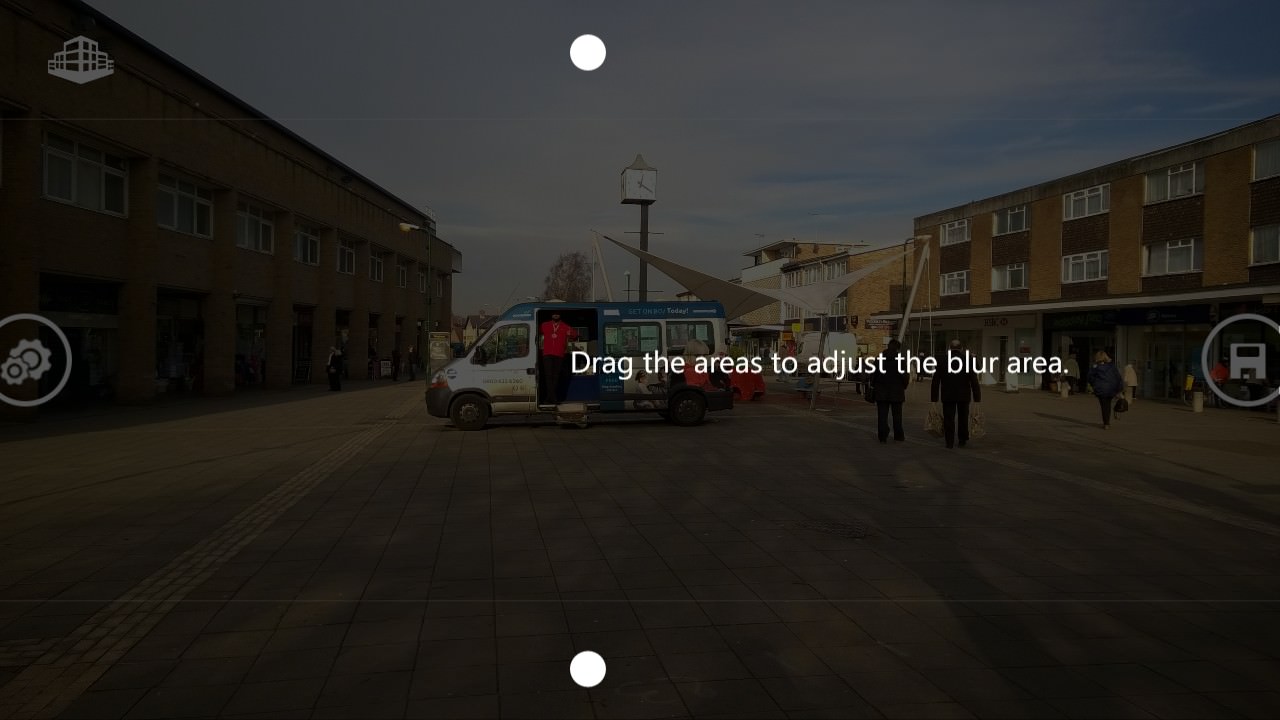'Diorama', in case you were wondering, is a word describing a miniature world, effectively what good tilt shift shots seem to represent. From my earlier piece:
Now, although the core effect of tilt shift is that just a particular focal plane is in err.... focus, and there's in theory no hard and fast rule about where else in the photo will and won't be in focus too, in practice, this type of shot is almost always used with landscapes, i.e. a subject starting in the medium foreground and extending into the distance. As with the example photo above, anything closer than the core focal plane, lower down in the frame, is blurred and out of focus, while anything further away, higher in the frame, also gets progressively blurred.
The fact that the bottom and top sections of the frame are blurred and the centre is in focus is purely artificial and due to us choosing a landscape as the subject, it should be noted. In principle, any part of the frame could be in or out of tilt-shift focus, depending on the subject chosen!
However, for most purposes, the landscape idea holds good and there's a good chance that anything lower in the frame will be closer and anything higher will be further away. Leading to an affectation of modern photo filtering applications on mobile platforms - the 'tilt shift' kludge, whereby the bottom and top of frame are artificially blurred, simulating something of the proper tilt shift effect without any tedious or expensive messing around with multiple lenses and mechanisms. It is a kludge though, make no bones about it, because it takes no account of the actual subject composition or distance of each part, plus - usually - the blurring is heavy handed and not done 'progressively' towards the edge of frame.
But let's not be churlish, the average phone user can still have fun with the 'tilt shift' effect and never mind what the photo purist might say....
Diorama is a simple enough tool to use. Tap to open a photo (the selection of which, as something suitable for tilt shifting, is half the battle!) - and note the lovely way that example tilt shifts are animated in behind the big buttons:

Then it's a matter of dragging down from the top and bottom to select the tilt shift 'blurred' regions. Not captured in a screenshot but animated in the application are 'white fog', which help show which areas of the image you're effectively blocking out:

One area where less subtle tilt shift blurs fall down is that the blurring is too savage - Diorama lets you use its settings sliders to dial down the blurring and colour reduction, letting you fine tune the effect:

The results are terrific too, and at full resolution. Here's an example of Diorama's output:

Of course, what we need is a more suitable subject. Something which could conceivably be a model, something in the middle foreground and a backdrop to blur. Something like this, another Diorama output example from my Lumia 830:

Great fun, and worth installing to try out alongside the likes of Lumia Creatve Studio. I did a few quirks, with the blur guides going unresponsive, but the developers do seem good at knocking bugs on the head, so do persevere - you can contact them via their Facebook page.
